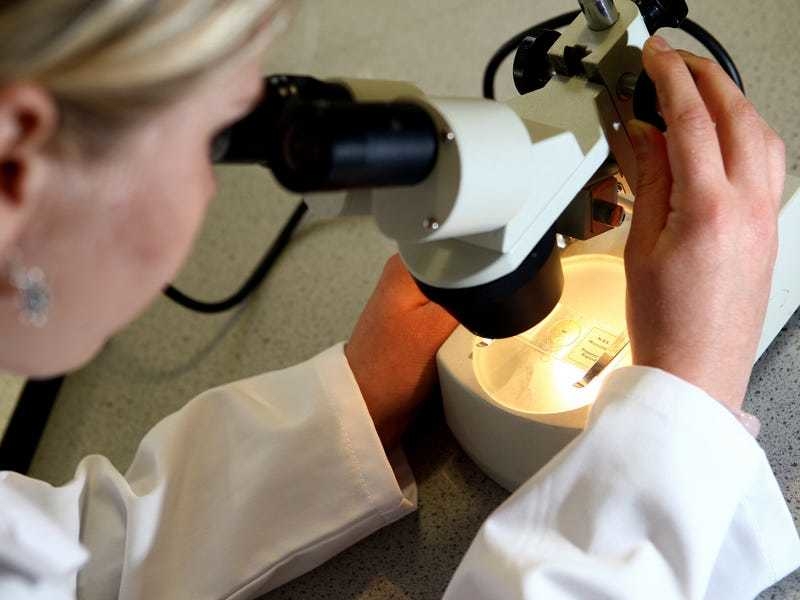Alastair Christie, the Island’s Asian-hornet co-ordinator, confirmed that the first attempt at tracking a nest using the device took place successfully on Tuesday. He was able to detect a nest in under two hours.
Last week Dr Peter Kennedy, an Asian-hornet expert from Exeter University who last year suggested the idea, gave training on attaching the tracking devices.
Mr Christie explained that the fiddly task required dexterity, and involved tying the device onto a hornet using material found in bullet proof vests to stop hornets gnawing through it.
‘To attach the tracking device you first have to anaesthetise it by putting the hornet in a tube, which you place in ice, giving you a five-minute window to attach it before the hornet regains consciousness,’ he said.
Using magnifying equipment, Mr Christie said he pins the anaesthetised insect to a restraining plate, holding it down with a wire across its abdomen, placing it on its front and splaying its legs and wings to secure it.
Then, using a fine Kevlar thread, the radio transmitter is tied to the hornet.
Mr Christie explained that once the delicate operation was complete, the hornet could be released and tracked using a radio receiver with a directional aerial, which guides users to the marked hornet using beeps that intensify the closer the controller gets to the insect.
‘For this to work you need to use a hornet big and beefy enough to carry the tracker, as the weight of the tracker equates to approximately 50% of the insect’s bodyweight.’
Mr Christie said he was currently practising attaching trackers to dead hornets in preparation for next year’s surge in activity.
A total of 72 nests, 27 of which were primary and 45 secondary, have been found in Jersey this year. A total of 55 nests were destroyed in 2018.






